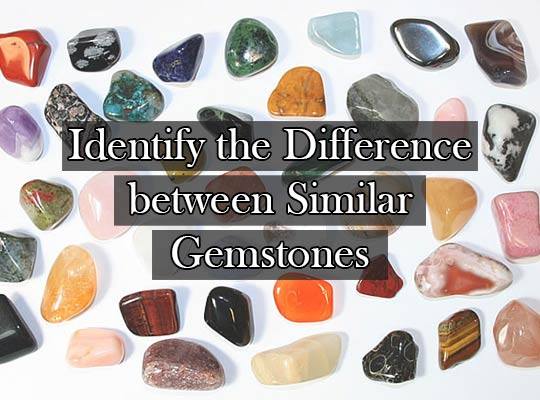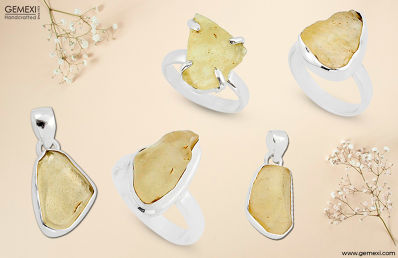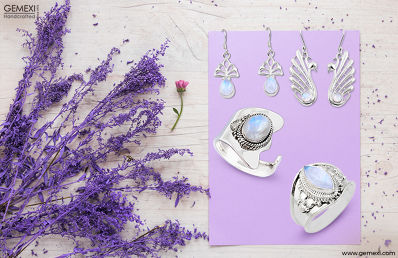Guide to Identify the Difference between Similar Gemstones
By Gemexi Team | Gemology- Updated On Mar 17, 2020

Gemstone jewelry not only accentuates the beauty of a woman but they are also considered a great investment. Gemstones are available in various colors and are categorized according to their rarity, price, weight and more. There are over 200 identified gemstones in the world which are categorized into five types – natural gemstones, genuine gemstones, synthetic gemstones, imitation gemstones, and treated gemstones. Seven gemstones, namely, Diamonds, Sapphire, Emerald, Ruby, Coral, Cats Eye, and Hessonite are called precious gemstones while many others such as aquamarine, amethyst, garnet, citrine, etc. are called semi-precious stones.
If you are interested in gemstones, the first skill you should acquire is the ability to differentiate between gemstones. Many times you will come across different gemstones that look alike but are actually very different from one another. Two look-alike gemstones with very similar physical attributes can have contrasting mineral composition making them two different gemstones. Gemstones identification is often regarded as a specialized branch in gemology and requires ample knowledge and expertise. However, there are ways to identify gemstones for the common man that should help you to make an informed purchase the next time you plan to buy gemstones.
Colors Do Not Tell The Complete Story
One of the most misleading guides to gemstones identification is trying to differentiate them by their color. For example, ruby, topaz, tourmaline, diamonds, garnet, and opals can all come in varying shades of red but each is very different from the other. If you are trying to buy gemstones based on their color then you wouldn’t be making a wise decision. There is another deciding factor that you should keep in mind while choosing a gemstone.
Weighing the Gemstones and Gauging Their Density
You can often be misled by the relative weight and density of the stone. Simply by holding two similar looking stones in your hand may not reveal much. You should turn around the stone slowly in your hand, check its translucency under a light source so that you understand its density. The hardness of a gemstone is measured on the Mohs scale. The closer the figure to 10 the harder the stone is. An ideal gemstone worth wearing as a jewelry piece should measure 7 or more on the Mohs scale.
Cut of the Stone
The rarity of a gemstone is also determined by its cut. Depending on the shape and size of the rough stone a gemstone jewelry’s value is determined. There are various cuts that are popular in jewelry making. The idea of a cut in gemstone jewelry making is to reduce the mass (which is described in carat). Some of the common cuts are cabochon, Asscher cut, emerald cut, princess cut and many more.
If you want to expand your gemstone collection it is important that you know more about gemstones before making any purchase. Though you will find many affordable gemstones in the market, most are also highly priced which is why it’s important to make an informed choice.
- Tags:
- Amethyst
- Garnet
- Coral
- Citrine
- Gemstones Guide
- Gemstonejewelry
- Genuine Gemstones
- Natural Gemstones
- Gemstones Identification
- Ways To Identify Gemstones
- Synthetic Gemstones
- Differentiate Between Gemstones
- Hessonite










0 Comments
Write Comments